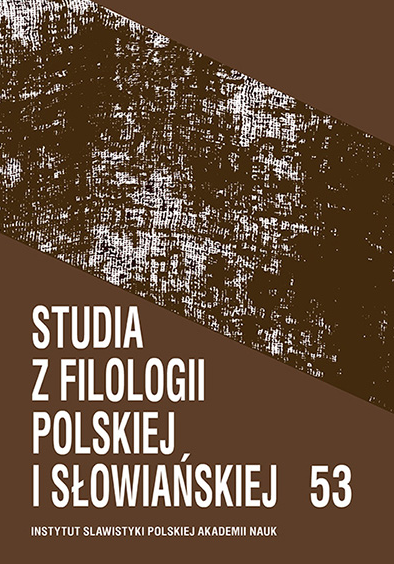Феномен синтаксической семиоимпликации
The phenomenon of syntactic semioimplication
Author(s): Vadim Melikian, Anna MelikianSubject(s): Semiotics / Semiology, Syntax, Pragmatics, Cognitive linguistics
Published by: Instytut Slawistyki Polskiej Akademii Nauk
Keywords: semioimplication; enantiosemy; communikeme; fixed phrase scheme; nongrammatism; phraseologisation;
Summary/Abstract: Semioimplicative meaning is a “derived,” secondary meaning. The typical example of a semioimplicative meaning in syntax is the use of the positive constructions in the meaning of the negative ones and vice versa (converted meaning). The semioimplicative sentence interpretation scarcely has logical limitations. Most sentences, given the right intonation, can undergo an enantiosemic conversion. The ironical negation can be hidden in practically each sentence. In this article we single out and parameterize the main conditions of such semioimplication and the kinds of language means triggering the semioimplicative mechanism. Besides, we draw attention to the ways of expressing diverse connotations organically linked with the very process of syntactic constructions semioimplication and consistently caused by it. The core of semioimplicative structures is constituted by constructions that are able to express two meanings: direct and transferred (in this case, opposite) meaning. We have termed them “symmetrical” constructions. The sentence models with one meaning opposite to the form expressing it and also the models opposite in sign but not correlated according to some morphological characteristics serve as the periphery of semioimplication (“nonsymmetrical” constructions). The models that possess any language means facilitating their reconsideration as their own opposites are called the “specialized” models in the research. The “non-specialized” models do not have such qualities. The ability to express two opposite meanings can potentially take place on different levels of the sentence model concretization: abstract (syntactic), morphological, general lexical and concrete lexical (i.e., on the level of speech model realization). Each of the types of opposition, both objective and evaluative ones, has its own means of specialization. In the sphere of enantiosemical and evaluative opposition of the sentence meaning the dominating development line of the semioimplication phenomenon is the pursuit of maximal language expressivity, on the one hand, and of monosemanticity, accuracy, and effectiveness, on the other hand. The tendency toward language means economy turns out to be weak in this case. The reason for this process consists in the desire to assign these sentences to the sphere of the expressive syntax by using them exclusively in the secondary, ironical and most expressive meaning. As a result, the nonsymmetrical (the maximally specialized) constructions are 1.5 times more numerous than the symmetrical constructions (ones with moderate specialization). We find research of this subject-matter in its functional-communicative, cognitive, discoursive and pragmatic-linguistic aspects to be to a topical and worthwhile endeavor.
Journal: Studia z Filologii Polskiej i Słowiańskiej
- Issue Year: 2018
- Issue No: 53
- Page Range: 348-368
- Page Count: 21
- Language: Russian

